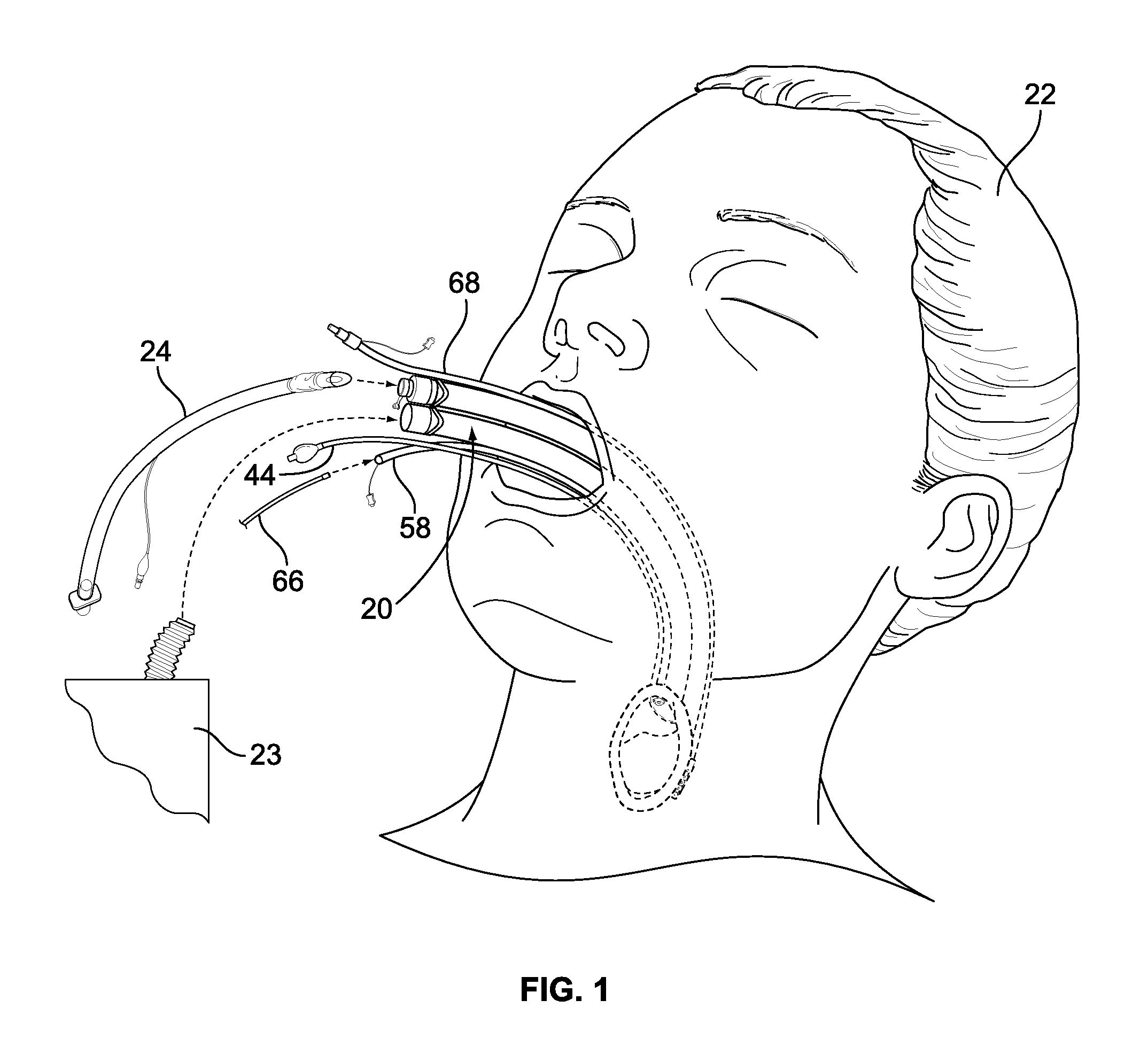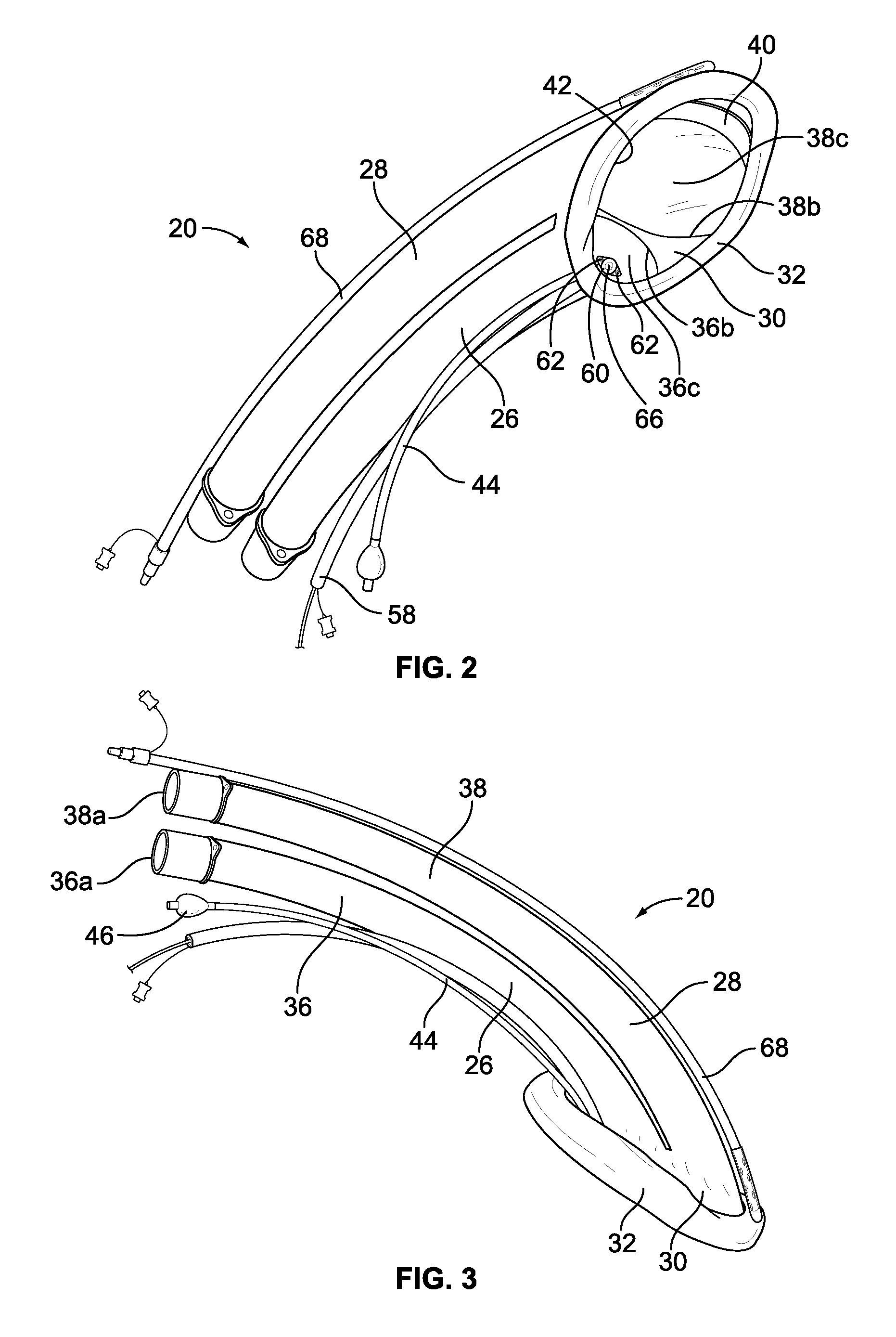Medical device, and the methods of using same
a technology of medical devices and airways, applied in the field of medical devices, can solve the problems of inability to know if the proper placement of the laryngeal mask airway has occurred, medical professionals may not know, and the airway may be difficult to intuba
- Summary
- Abstract
- Description
- Claims
- Application Information
AI Technical Summary
Benefits of technology
Problems solved by technology
Method used
Image
Examples
first embodiment
[0055]Attention is invited to the medical device 20 shown in FIGS. 1-8 which shows the specifics of the dual-tube design. [0006] Each tube 26, 28 is formed from a cylindrical wall 36, 38 having a proximal open inlet 36a, 38a (at the end closest to the medical professional), an opposite distal open outlet 36b, 38b (at the end furthest away from the medical professional during use of the medical device 20) and a central passageway 36c, 38c extending through the respective tube 36, 38. Each tube 36, 38 has a centerline 36d, 38d which extends from the proximal inlet 36a, 38a to the distal outlet 36b, 38b. The tubes 26, 28 are curved along the length of each tube 26, 28 and the centerlines 36d, 38d are accordingly curved. Each tube 26, 28 has a diameter which is preferably 15 mm, however, each tube 26, 28 may be bigger or smaller, and / or not of equal diameter with respect to each other. Each tube 26, 28 is formed of a relatively stiff but compliant plastics material and is preferably for...
second embodiment
[0066]Attention is now invited to the medical device 120 shown in FIGS. 9 and 10 which shows the specifics of the dual-tube design.
[0067]Each tube 126, 128 is formed from a cylindrical wall 136, 138 having a proximal open inlet 136a, 138a (at the ends closest to the medical professional), an opposite open distal outlet 136b, 138b (at the ends furthest away from the medical professional during use of the medical device 120) and a central passageway 136c, 138c extending through the respective tube 126, 128. Tube 128 is shown in full line in FIG. 9 to illustrate the construction of the tube 128 (of course, in practice, tube 126 may be opaque such that tube 128 would not be visible along its length). The outlets 136b, 138b generally align with each other. Each tube 126, 128 has a centerline 136d, 138d which extends from the proximal inlet 136a, 138a to the distal outlet 136b, 138b. The tubes 126, 128 are curved along the lengths thereof and the centerlines 136d, 138d are accordingly cur...
PUM
 Login to View More
Login to View More Abstract
Description
Claims
Application Information
 Login to View More
Login to View More - R&D
- Intellectual Property
- Life Sciences
- Materials
- Tech Scout
- Unparalleled Data Quality
- Higher Quality Content
- 60% Fewer Hallucinations
Browse by: Latest US Patents, China's latest patents, Technical Efficacy Thesaurus, Application Domain, Technology Topic, Popular Technical Reports.
© 2025 PatSnap. All rights reserved.Legal|Privacy policy|Modern Slavery Act Transparency Statement|Sitemap|About US| Contact US: help@patsnap.com



